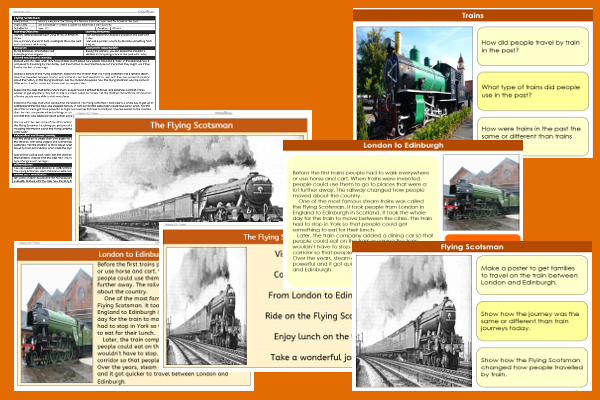Home > Key Stage One > History > Trains
Lesson Five – Flying Scotsman

This history teaching pack for Key Stage One gets the children to explore, describe and record the history of a famous train that was used for travel across Great Britain by passengers in the past.
The class can design and produce posters using persuasive writing to persuade families to take a trip on the Flying Scotsman to visit different locations in the country.
Download this teaching pack including a lesson plan, classroom activities and an interactive presentation to explore, describe and record the history of a famous train that was used for travel across Great Britain by passengers in the past
Activities in this teaching pack include display posters to identify and describe how passengers travelled in steam trains in the past, a shared reading text to investigate what it was like to travel by steam trains and a worksheet to design and produce posters using persuasive writing to persuade families to take a trip on the Flying Scotsman.
The interactive presentation can be used to explore and record the history of a famous train that was used for travel by passengers in the past.
This lesson is part of a history scheme of work to get the children to explore and illustrate how travel has changed since the past through the invention and development of trains from steam to electric technologies. There are teaching activities for shared learning, differentiated worksheets to support independent learning and interactive presentations to introduce concepts and key skills.
-

Transport Journeys
Investigate the content structure of explanations that explain how and why families make different journeys by a range of forms of transport
-

Spooky Things
Investigate the structure and content of narrative fiction and poetry that describe some of the spooky things that might happen in the world
-

Word Matching
Identify, match and record the initial sounds that have been used in a range of cvc words beginning with different letters
-

Counting Back
Practise using the number technique of counting back to solve and complete a range of abstract and contextual subtraction calculations
